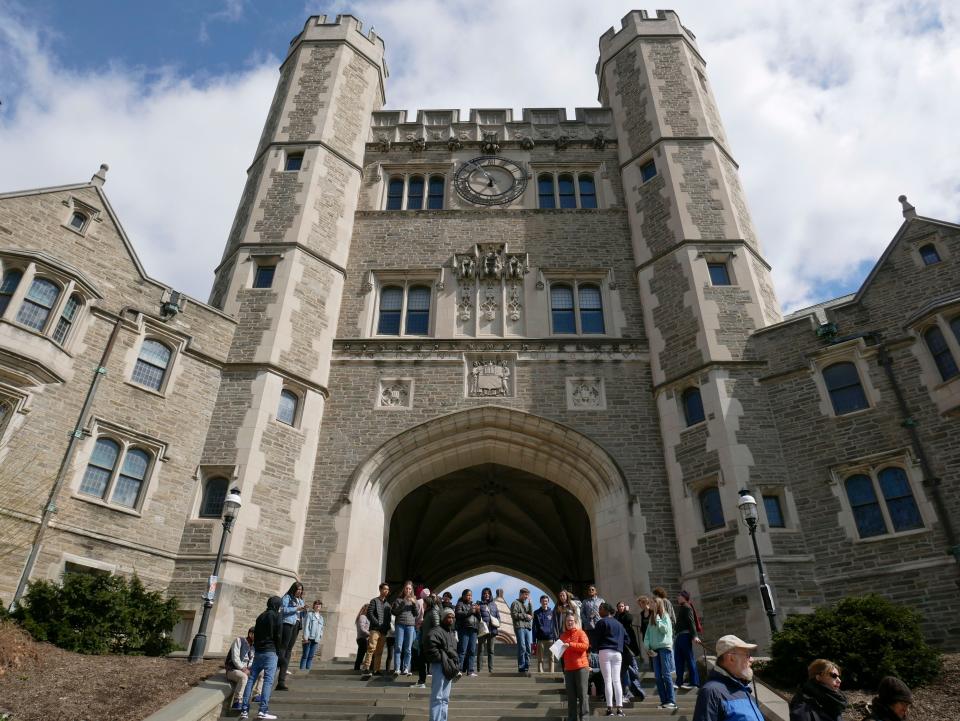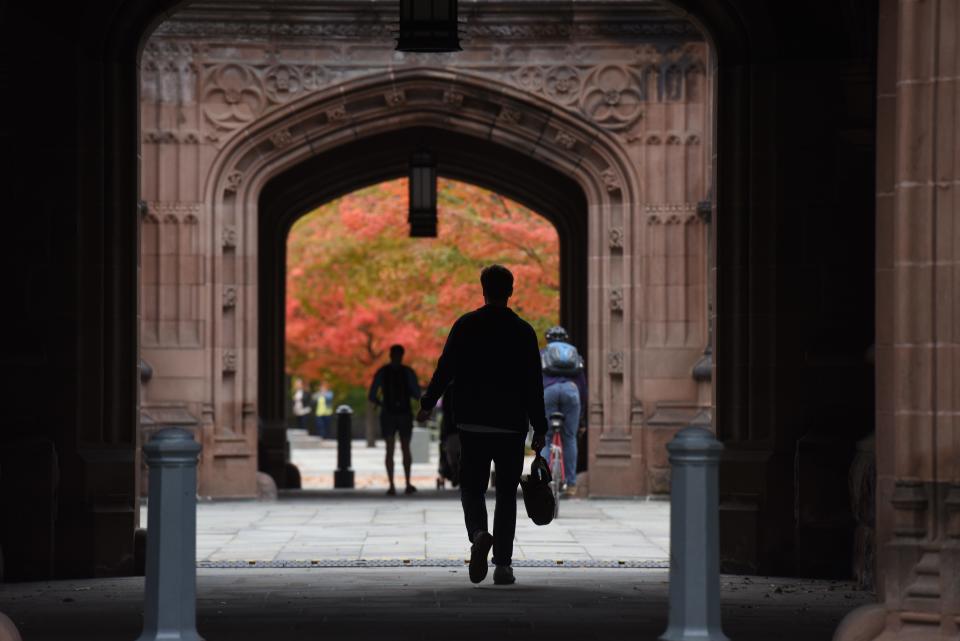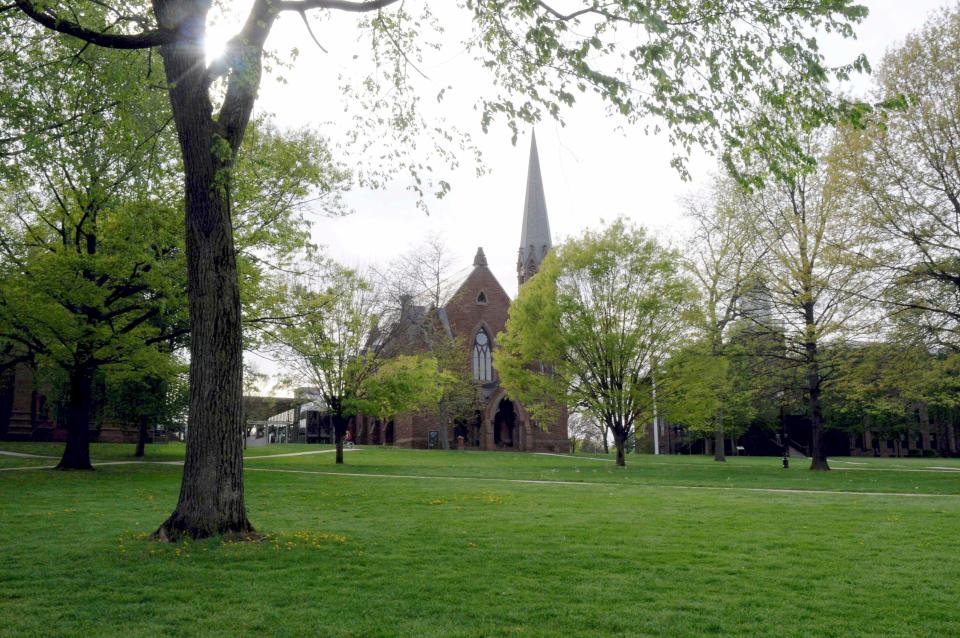Can ending legacy admissions make the application process fairer at elite colleges?
American higher education has never been under more scrutiny than right now, and the tradition among elite colleges of giving preference in admissions to children and grandchildren of alumni — called legacy admissions — is the latest to come under fire.
Just days after the Supreme Court’s affirmative action ruling in June made it illegal to consider race in college admissions, Boston-based Lawyers for Civil Rights, a group representing Hispanic communities and African immigrants, filed a federal complaint alleging that Harvard University’s policy of legacy admissions violated its clients’ civil rights.
The Biden administration had already called on federal agencies to investigate barriers to college after the Supreme Court’s June 30 ruling on affirmative action; three weeks later it said it was investigating the complaint against Harvard.
How the lawsuit will play out remains to be seen, but it looks as if the practice of legacy preferences in admissions, already considered unfair by many, will fade.
Still, there are aspects of legacy admissions that should be clarified, said Allen Koh, who runs Cardinal Education, a private college consultancy for admission to elite colleges based in Silicon Valley.
Preferential admissions for children of alumni will likely be diluted, Koh said, but preferences for children of wealthy donors — also called development preferences — won’t be, he said. The lawsuit against Harvard wants to end admissions preferences for children of both alumni and large donors. The groups often overlap.
“There are a lot of people who want to keep legacy — obviously the alumni — but university administrators also are extremely keen on keeping legacy,” said Koh, a Demarest High School and Stanford alum.
Legacy families donate, helping colleges provide student aid
The Supreme Court ruled that making admissions preferences based on race is illegal, but colleges have indicated that they will still find ways to implement affirmative action. They could have students check off a box that says they are descended from enslaved communities, instead of a box that says race.
The case against legacy is not that it is race-based, but that it affects races unfairly; white, wealthy students benefit at the cost of non-white, low-income and first-generation college students.
“A lot of legacy families are among some of the most loyal and generous families to a university, funding the tremendous number of scholarships that these universities offer,” Koh said. Most students at these universities receive some sort of financial aid.
At Princeton University, which Koh said aggressively pursues diversity, 21% of students admitted in 2022 were low-income and Pell-grant-eligible. “They are most definitely not paying tuition, so these very loyal alumni are the ones who are enabling the university … in making opportunities for a lot of students who wouldn’t otherwise have had them,” Koh said.

Princeton has given students with a family income of less than $65,000 a full ride, covering tuition, room and board. In 2023, it raised that income threshold to $100,000. Some 12.5% of its students admitted last year were from legacy families.
Large gifts are a legitimate reason to retain legacy preferences, but donors who want to reward universities for ending legacy could also step in and keep funds coming, said Julie Wollman, a professor at the University of Pennsylvania’s Graduate School of Education and former president of Widener University.
Legacy admissions as a 'tie-breaker'
Legacy students aren’t displacing low-income students of color for admission, said Koh, whose firm has an office in wealthy Beverly Hills. Private college consultants typically have high-income clients.
Universities have “stable populations of all different types of demographic groups,” Koh said, meaning an admitted class's demographic profile won’t vary much from year to year. Rather than competing against say, an inner-city, low-income student, legacy students compete with kids from similarly privileged backgrounds, who vacation in the same places and go to the same highly resourced schools, he said. This is common knowledge among consultants, but not among members of the public, who see legacy admits as taking away a more deserving student’s spot.
Princeton President Christopher L. Eisgruber said in a 2022 interview with the Philadelphia Inquirer that legacy acts merely as a “tie-breaker.” "If you change the legacy preference, it’s not going to affect whether students from well-represented groups get in. It’s not going to be the difference maker when it comes to racial diversity,” Eisgruber said at the time.
The legacy lawsuit brought against Harvard alleges that children of donors and alumni "are flagged at the outset of [the] admissions process and are granted special solicitude" and "tips." The complaint says 15% of Harvard's admitted students represent both children of donors and legacy families.

Legacy applicants also increasingly compete against each other for admission, according to the website of another private college consultancy, the Koppelman Group.
Ending legacy admissions made colleges more diverse
Yet many schools that ended legacy have become more diverse in race and socioeconomic status, such as Johns Hopkins and Amherst, said Wollman. The Massachusetts Institute of Technology, Amherst, Johns Hopkins, the University of Michigan at Ann-Arbor, the University of California, Texas A&M and most recently Wesleyan University ended legacy admissions preferences.
Legacy students fell from 12.6% to 3.6% at Johns Hopkins six years after it ended legacy admissions in 2014, while Pell-eligible low-income students went up to 19.1% from 9%, university President Ronald Daniels wrote in The Atlantic.
And as student bodies at elite universities become more diverse, the profile of families who will become legacy donors will also change from being primarily white. Could ending legacy now disadvantage their children?
“Some might argue that it would be hard for a low-income student to really turn around their family history, but that is what elite institutions do," Wollman said. "They do change the trajectory for their students.”

In his piece in The Atlantic, Daniels quoted a study showing that a low-income graduate of a selective university had a 60% chance of making it to the top one-fifth earning bracket, compared with a 5% chance if they did not attend college at all.
Many schools saw an uptick in alumni donations even after they ended legacy admissions, the lawsuit against Harvard argues.
Big gifts could come in from people who do not support legacy, because “they are proud of the university for taking a stand,” Wollman said. The gifts that alumni donors make are critical to schools, but they don’t publish data linking donations to legacy admissions, making it difficult to assess the impact of eliminating those donations, she said.

Meanwhile, the arguments against legacy stack up. There isn’t enough evidence that retaining legacy preferences helps Harvard achieve any educational goals, the legal complaint against the university says, but ending it would improve diversity in the student body, according to Harvard’s own research. Harvard receives federal funds in addition to the annual revenue generated by its endowment; the lawsuit says Harvard should abandon legacy policies to continue receiving government money.
Supreme Court decision makes legacy action more urgent
The sword of Damocles that was dangling over legacy preferences dropped with the Supreme Court’s affirmative action ruling, which critics argue makes the case against legacy even more urgent because race-based admissions preferences will no longer compensate for legacy’s benefits.
Many institutions are realizing that legacy doesn’t align with their values, Wollman said. And universities are reading the writing on the wall.
The University of Pennsylvania’s campus newspaper said the university has quietly changed its legacy policies. “Legacies who apply to Penn — like all applicants — receive thorough consideration in the application process,” the school says on its website. That suggests no dibs for legacy applicants over others.
The Daily Pennsylvanian reported that Penn previously said a legacy applicant would receive the “most consideration” if they applied through the early decision program, which requires students to commit if they are admitted.
Neither Princeton nor Penn would say whether it is considering changing its legacy policies.
The number of schools that use legacy preferences is tiny — a few hundred of the more than 2,000 universities in the United States.
So a principled look at legacy is important, but so is looking at data, Wollman said.
Ending legacy won’t prevent children from attending their parents’ alma maters, because they already have an edge. Schools might still decide to admit more wealthy children of alumni through the standard process, even if they end legacy completely, Wollman said.
Higher education has long been in crosshairs for its very high cost, more so since the COVID-19 pandemic's exacerbated impact on marginalized and low-income students and the racial reckoning of 2020 that reopened conversations about equity.
“Even if you don’t have preferences for legacy, you're still going to be hitting a lot of wealthy, white students. So it may not be addressing the fundamental problem, but it seems like an easy way to solve it,” Wollman said.
Innovative ways to expand access
The push to end legacy will finally have the effect of forcing universities to find innovative ways to widen access.
Starting this fall, Duke University will cover tuition for undergraduate students in North Carolina and South Carolina whose family incomes are $150,000 or less. Wollman pointed to Duke’s initiative as a counter to legacy. The university website says it “does note alumni status” but offers no admission guarantees.
Still, some argue that removing legacy admissions could endanger the “culture of loyalty” that, according to Koh, helped American universities take the lead in hiring top talent in many fields worldwide in “just a few generations, despite being some of the youngest in their field.”
The fundamental problem is equitable access to a high-quality education, Koh said. "The better conversation to be having is that why is the state of K-12 education so poor that more people are not even qualified to get into these elite schools?" he said. "That’s what’s driving inequality."
This article originally appeared on NorthJersey.com: Legacy admissions at elite colleges under growing scrutiny

